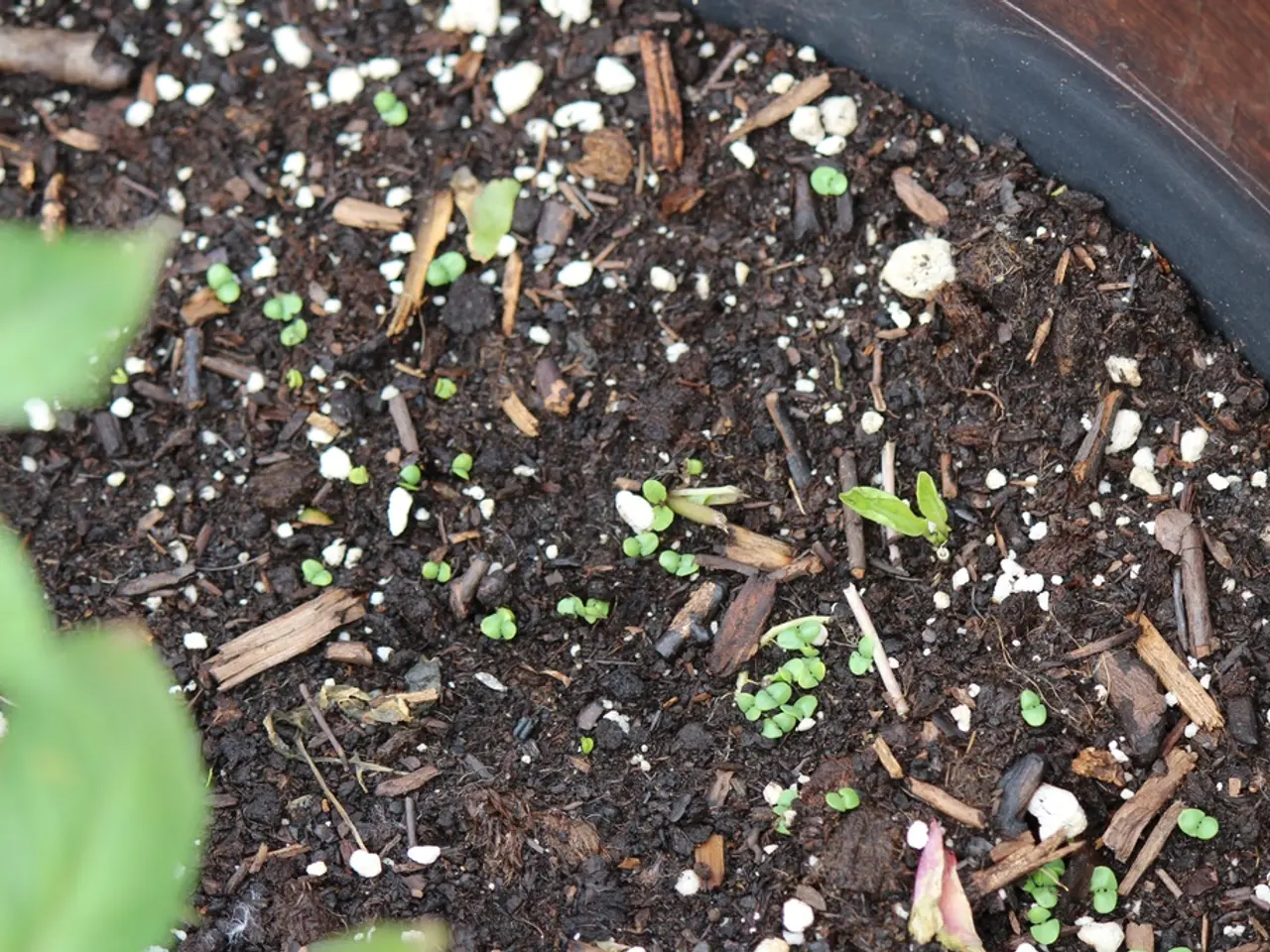Assessing Soil Conditions Before Planting: A Simple Guide for New Gardeners
In the world of gardening, understanding your soil is crucial for growing healthy plants. Here's a guide on how to identify your soil type and test its nutrient levels using simple, low-tech methods.
First, let's discuss the methods for identifying soil types. The squeeze test, feel test, ribbon test, and jar test are the simplest ways to do this. By observing soil behaviour when wet and feeling its tactile texture, you can distinguish between sand, silt, clay, and loam soils.
The squeeze test involves moistening some soil and squeezing it in your hand. If it falls apart immediately, it's likely sandy. If it holds together tightly in a ball, it's clay. Soil that stays in a loose ball but crumbles easily is probably loam.
The feel test requires you to rub wet soil between your fingers. A gritty texture indicates sand, smooth means silty soil, and a sticky or slimy feel suggests clay.
The ribbon test involves forming a ball with moist soil and then gently squeezing it between your thumb and forefinger to form a ribbon. A sandy soil won't form a ribbon; loam forms a short ribbon (less than an inch); clay forms a long, strong ribbon with little breakage; and clay-loam ribbons break between 1-2 inches.
The jar test involves putting a soil sample in a jar filled with water, shaking it well, and letting it settle. Over time, the soil layers separate: sand settles first, then silt, then clay. Measuring the relative thickness of these layers roughly quantifies the soil texture.
For more formal classification, standardized charts use grain size distribution (sieving), liquid limit, and plasticity index tests to distinguish granular (sand, gravel), silt-clay, and other materials.
If a more detailed analysis is needed, agronomic soil testing using lab equipment or digital testers can measure nutrients, pH, organic matter, and other properties. However, these require special tools and laboratory analysis.
After collection, the soil sample should be dried indoors for a few days and sealed in a plastic bag. It is recommended to test your soil every three to five years, preferably in the fall before the next planting season.
Testing your soil can help discover its type and acidity, which can help decide what will grow best and how to improve soil. To test soil nutrients, collect a soil sample by digging four to eight inches below the soil surface in your garden bed, taking samples from several locations, mixing them together, and removing any rocks, sticks, and debris.
To test soil acidity or alkalinity, use vinegar and baking soda. Soil that fizzes with vinegar is alkaline, and soil that fizzes with baking soda is acidic. To test soil pH, a measurement that indicates whether the soil is acidic or alkaline, use a soil pH tester or pH strips.
For a more accurate analysis of soil health, send a sample to a laboratory for testing. To check for soil compaction, use a wire or rod and measure the depth it can penetrate. Ideally, it should penetrate at least a foot before bending.
To test water infiltration, use a coffee can, push it into the soil, fill the visible portion with water, mark the water height, and time how long it takes for the soil to absorb it. To examine root development, look for white roots with fine strands, as brown, mushy roots indicate drainage issues.
To find out the soil texture, use a peanut butter or mason jar with a lid, a ruler, and a shovel. Fill the jar with soil, shake it well, and let it settle. Measure the depth of each layer to determine the proportion of sand, silt, and clay in your soil.
In summary, by using these simple methods, you can gain valuable insights into your soil's properties and make informed decisions about what to grow and how to improve your soil. Happy gardening!
Adopting a better understanding of your soil type and its nutrient levels is crucial not only for gardening, but also for maintaining overall soil health, which is essential for a balanced home-and-garden lifestyle. By practicing these easy methods for identifying soil types, such as the squeeze test, feel test, ribbon test, and jar test, you can not only become a more skilled gardener, but also enhance the quality of your garden and provide a healthy environment for your plants to thrive.




